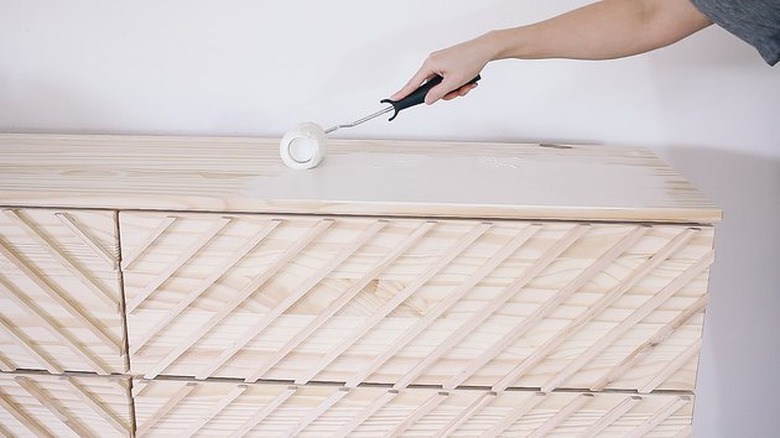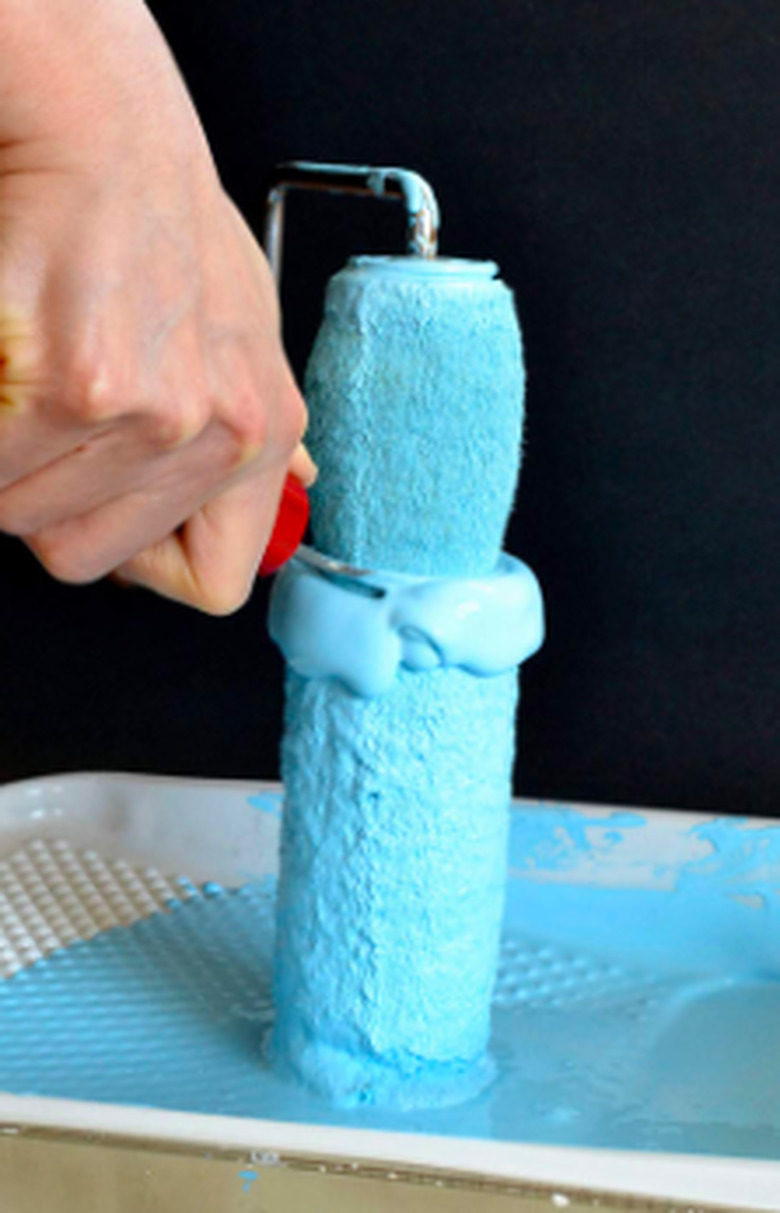How To Clean Paint Rollers
Rollers and brushes are the painter's tools of the trade. Pros keep their brushes clean, soft and ready for use, they take care of their roller covers the same way. Roller covers aren't the main expense as far as any painting job is concerned, but they aren't free, either, and it pays to clean them. If you have a large project, or you do a lot of painting,, the cost of buying new roller covers can become significant. While bargain rollers are more or less disposable, quality roller covers made of wool or high-density woven fabric can cost $10 or $12 each, and you can't afford to throw a quality tool away. Not to mention that discarding a roller cover filled with wet paint is an unpleasant, messy proposition.
Cleaning fresh paint from a roller takes about five minutes, and if you do it properly, it's time well spent. However, one of the best ways to waste that five minutes is to leave solvent and dissolved paint on the roller cover when you're done. It hardens into the nap, making the cover unusable unless you invest quite a bit more time giving it a second cleaning. This is one reason why it's smart to invest in a spinner, which is one tool that can make roller cleaning a breeze. There are others.
Start by Scraping Excess Paint
Start by Scraping Excess Paint
Cleaning a roller when it's loaded with paint is a waste of paint, and it's much more difficult. If you can't use all the excess paint on the surface you're rolling, you should scrape it off into the paint tray or bucket. Many painters use a 5-in-1 tool, which is a multi-purpose scraper with a curved edge that fits around a standard roller cover. Even easier: Get a dedicated roller cleaning tool that fits tightly around the roller and removes all the excess paint in a single swipe.
Dispose of Paint and Solvent Responsibly
Dispose of Paint and Solvent Responsibly
Once the excess paint is gone, you'll have to rinse off the rest with an appropriate solvent, which is water for latex paints and either mineral spirits or turpentine for oil-based paints.
When rinsing with water, it's easy to use a utility or laundry sink, but think twice before doing this if the residence is served by a septic system. Latex paint harms the bacteria in the tank that break down waste, increasing the build-up of solids and the likelihood of drain-field clogging. Paint is also bad for the environment, so washing the roller outside with a hose isn't the best option, either.
The most responsible way to clean latex paint from rollers is to do it inside a 5-gallon bucket, using a hose. Let the water run slowly, and scrape the roller while holding it under the water. Continue to do this until the water runs clear. At this point, it's safe to take the roller to the sink and finish cleaning it with soap and water. When you're done, cover the bucket and store it until the paint settles in the bottom. You can then remove the solid material and dispose of it as hazardous waste.
When cleaning oil-based paint, you don't have the option of using a sink or hose, so the bucket method is the only practical option. Pour the solvent on the roller while you scrape and continue pouring until the solvent runs clear. Cover the bucket, store it and allow the paint to settle out. The solvent is reusable once the paint has settled out.
Two Tools that Make Roller Cleaning Easier
Two Tools that Make Roller Cleaning Easier
You've cleaned the roller cover with water or solvent, and the solvent runs clear. Great, but you're not done yet. Solvent and dissolved paint are still hiding deep in the nap. Some painters use a rag to wipe off the excess solvent, but that may only force the paint deeper. The best way to get the solvent out is to spin the roller cover. You can actually do this by leaving it on the roller and spinning it with your hand, but it's more efficient to use a brush and roller spinner, which you can buy at any paint store. Keep the roller inside a 5-gallon bucket while you spin it, because even if it looks clean, it's going to spew paint-laden solvent in all directions.
Most roller spinners work by a hand pump action, but there are also spinners that attach to a power drill. With this type, it's best to use a variable speed drill, because a roller cover spinning at the full speed of a power drill can create a serious mess.
Another tool you might want to have on hand if you do a lot of painting is an automatic roller washer. This is basically a plastic sleeve that fits tightly over a standard roller cover. It has an attachment for a garden hose, and when you turn it on, the water circulates through the nap and removes all the paint. Point the end of the sleeve into a bucket to catch all the paint-laden water. Using this tool, you can clean latex paint from a roller using a fraction of the water it takes to do the job freehand.
Cleaning Hardened Paint
Cleaning Hardened Paint
If you did a less-than-perfect job cleaning oil-based paint off your roller cover, and the paint hardens, you might as well discard it and buy a new one. You might be able to soften the paint with lacquer thinner, but it will take time and create a mess. Even if you're successful, you won't save any money, because the solvent will cost more than a new roller cover.
If the hardened paint is water-based, however, the roller may well be worth saving. You can soften latex paint with a store-bought brush-cleaning solvent, or you use ammonia and water, or denatured alcohol. You can also simply let the roller soak in hot, soapy water for a few hours. Once the paint softens, you should be able to scrape it off with a 5-in-1 tool or a roller scraper. You don't even need to scrape it if the paint you're going to roll is the same color as the paint on the roller—just spin the roller to get the excess water out and start painting.
Also Clean the Roller Handle
Also Clean the Roller Handle
So much attention is paid to cleaning the roller covers that the handles themselves are sometimes neglected. After each use, make sure to carefully brush or scrape paint off the roller handle itself, especially the seams where the cylinder rotates around its axle. Built-up dried paint residue can quickly leave the roller handle useless unless you clean it after every use. Ideally, the roller handle should be entirely free of paint after every use. Dry it carefully after washing it.

